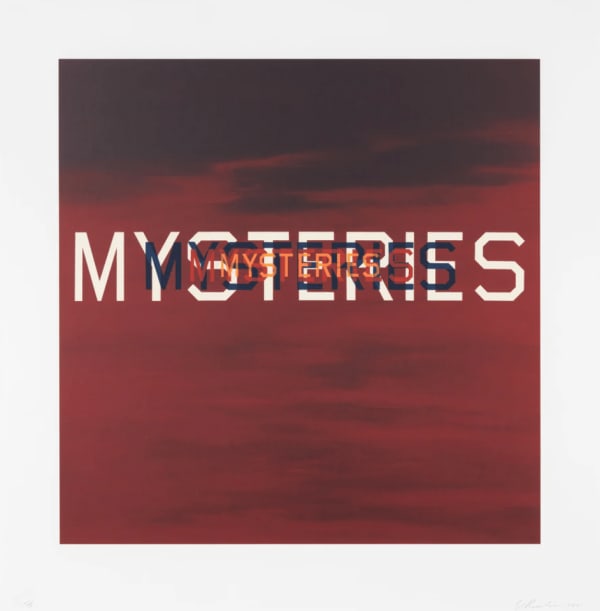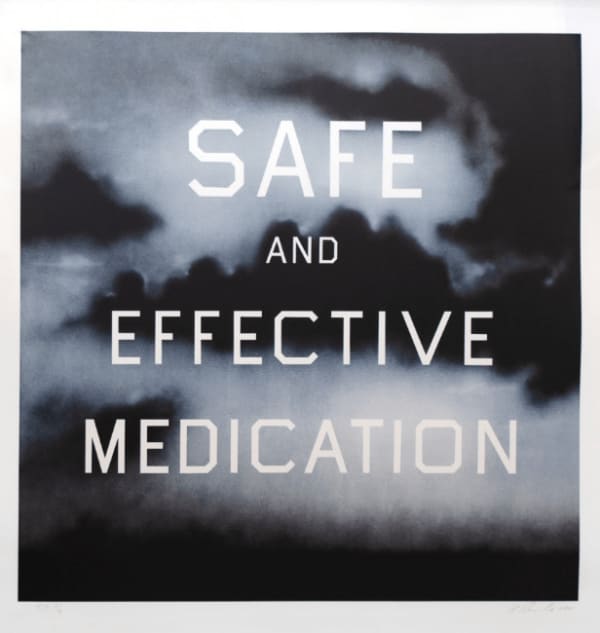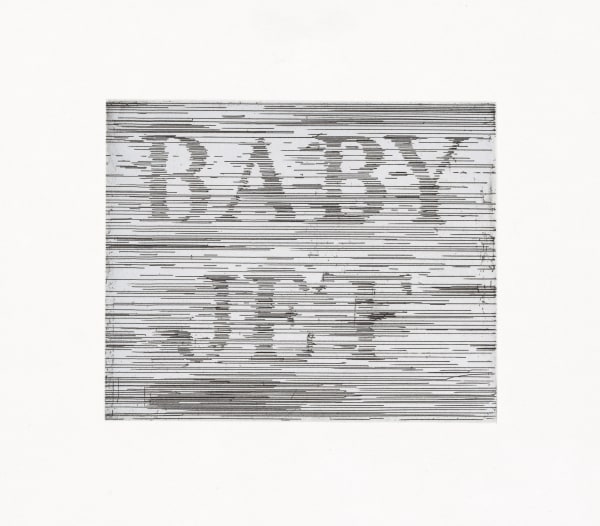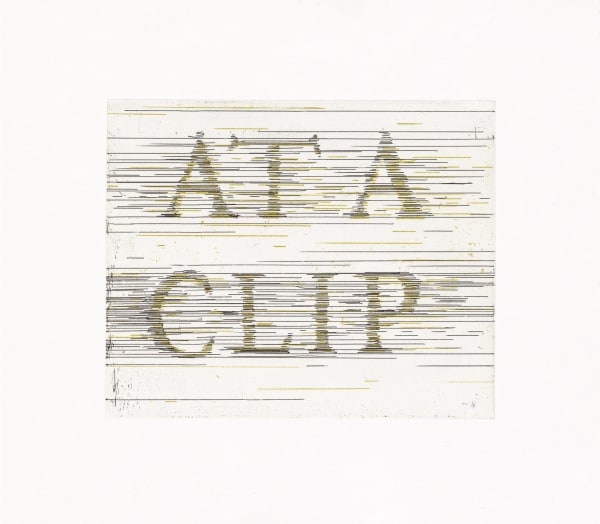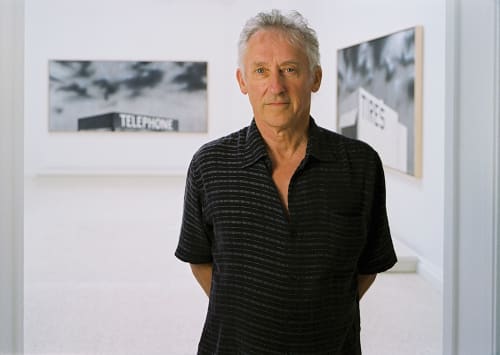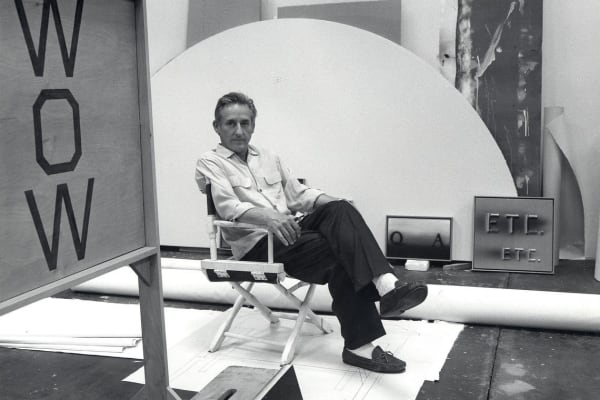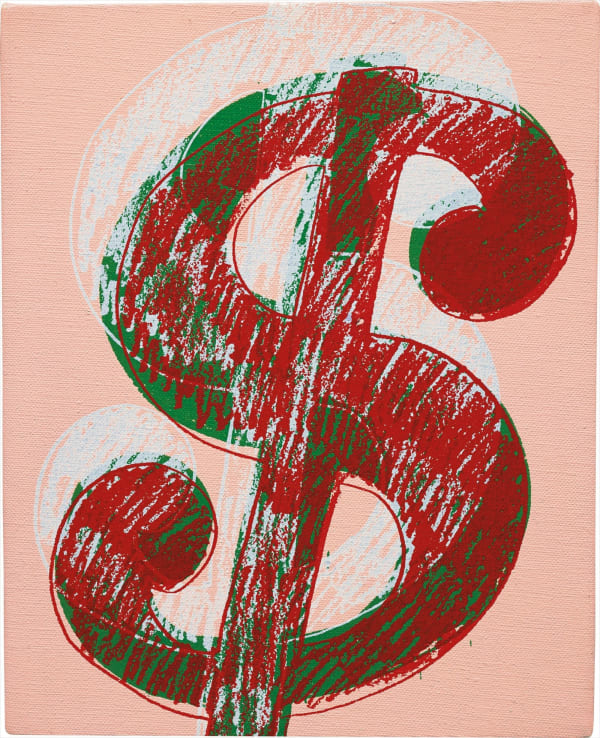-
Ed Ruscha's art across prints, paintings and installations has firmly cemented him as one of the world's most important artists. In a career lasting over 6 decades, his visual & language based artworks have defined the modern experience making the ordinary extraordinary. Browse Ed Ruscha art for sale at Guy Hepner, Ruscha dealers since 2005.
-
Latest: Ed Ruscha Prints for Sale
-
Series

Ed Ruscha
Pepto-Caviar Hollywood, 1970Screenprint on Copperplate Deluxe paper, torn and deckle edges14 3/4 x 42 in
37.5 x 106.7 cmEdition of 50Series: HollywoodCopyright The ArtistEd Ruscha, a pioneering figure in contemporary American art, has left an indelible mark with his iconic depictions of the American landscape. Among his most celebrated works are the Hollywood...Ed Ruscha, a pioneering figure in contemporary American art, has left an indelible mark with his iconic depictions of the American landscape. Among his most celebrated works are the Hollywood prints, a series that encapsulates the allure and mythology of Los Angeles, while simultaneously subverting traditional notions of representation and perspective.
Ed Ruscha's fascination with Hollywood began in the early 1960s, as he embarked on a journey to capture the essence of the city's iconic sign and its surrounding landscapes. What emerged from this exploration was a series of prints that offered a unique perspective on Hollywood, devoid of glamour and spectacle, yet infused with a sense of stark beauty and existential contemplation.
At the heart of Ruscha's Hollywood series lies the iconic Hollywood sign, a symbol synonymous with dreams and aspirations. However, in Ruscha's hands, the sign undergoes a transformation, stripped of its grandeur and reduced to a mere architectural feature against the backdrop of the Los Angeles skyline.
One of the defining features of Ruscha's Hollywood prints is his manipulation of perspective and scale, which serves to challenge conventional modes of representation and perception. In works such as "Hollywood (Corridor)" and "Hollywood (Standard Station)," Ruscha presents viewers with distorted and fragmented views of the cityscape, inviting them to reconsider their preconceived notions of space and place.
Through his use of bold colors, stark contrasts, and geometric forms, Ruscha creates a sense of disorientation and ambiguity, mirroring the dissonance and dislocation inherent in the urban landscape. By subverting traditional perspectives, Ruscha encourages viewers to engage with his work on a deeper level, probing the boundaries between reality and representation.
Ed Ruscha's Hollywood prints continue to captivate audiences with their evocative imagery and thought-provoking themes. By deconstructing and reimagining one of the most iconic symbols of American popular culture, Ruscha challenges us to confront the myths and realities of the urban experience.
Moreover, Ruscha's innovative approach to printmaking has had a profound influence on subsequent generations of artists, inspiring them to push the boundaries of artistic expression and experiment with new forms and techniques. As such, the Hollywood series stands as a testament to Ruscha's enduring legacy as a pioneer of contemporary art.
In conclusion, Ed Ruscha's Hollywood prints offer a compelling meditation on the allure and mythology of Los Angeles, while simultaneously challenging conventional modes of representation and perception. Through his innovative use of perspective, scale, and color, Ruscha invites viewers to reconsider their preconceived notions of the urban landscape, prompting a deeper engagement with the complexities of contemporary life. As timeless artifacts of American art, the Hollywood prints continue to resonate with audiences, reminding us of the power of art to both reflect and reshape our understanding of the world around us.Overview"I'm interested in glorifying something that we in the world would say doesn't deserve being glorified."
Ed Ruscha’s art is art of the everyday that brings a sense of the extraordinary to the ordinary. There is a magical sense of exploration within the art of Ed Ruscha which challenges our conventions and brings to life the often overlooked. During his career that has spanned over seven decades, Ed Ruscha’s prints, paintings and installations have redefined and informed the dialogue around art itself. As one of the pioneering figures of the American pop-art movement of the 1960s, Ruscha’s distinctive style saw the artist rise to fame for blend of high and low, accessible cultures that draw inspiration from everyday items such as branding and packaging, the cityscapes of Los Angeles, popular culture, and the American West.
Ruscha’s art is characterized by his use of a range of linguistic devices in his text pieces such as onomatopoeia, puns, alliteration and contrasting meanings. Many of his early works such as Honk 1962 depict single words in a strong typographic format.
Ruscha became well known in the late 1950s through the creation of small collages using images and words taken from everyday sources such as advertisements in magazines and newspapers. A style which he developed over the course of his career. Exploring universal themes of consumerism, the American Dream, and our modern, urban landscape, Ed Ruscha’s prints and paintings capture an artist whose bold use of visual and linguistic signs are coding with a joyous celebration of life. Throughout Ed Ruscha’s print output we see an artist distill the essence of his artistic vision into more accessible formats styles, textures and colors and showcase the evolution of his work,
At Guy Hepner, we have assisted collectors across the world to buy Ed Ruscha art. From our New York and London galleries, we offer a selected range of Ed Ruscha prints and paintings and can source works from his seven decade career Whether new to collecting Ed Ruscha prints, or an experienced collector, our knowledge and experienced team can help you.
For further information on our available Ed Ruscha limited edition prints for sale or to buy original Ed Rushcha art, contact info@guyhepner.com ExhibitionsNews
ExhibitionsNews-

Mel Bochner & Ed Ruscha
Masters of Language, Landscape, and Contemporary American Thought December 10, 2025Few artists have shaped the trajectory of text in contemporary art as profoundly as Mel Bochner and Ed Ruscha. Emerging from different coasts, different sensibilities,...Read more -

Ed Ruscha: Standard Station: A Guide
Architecture, Americana and the Power of Repetition December 10, 2025Few images in postwar American art are as instantly recognisable or culturally loaded as Ed Ruscha ’s Standard Station . First conceived as a painting...Read more -

The Most Expensive Ed Ruscha Artworks
Far From Standard December 10, 2025Ed Ruscha is one of the very few living artists whose market now operates comfortably in the tens of millions of dollars. In November 2024...Read more -

How To Collect Ed Ruscha Art
The Ultimate Collecting Guide December 2, 2025Ed Ruscha is one of the most important artists of the post-war period. For many collectors, his prints are the most compelling—and most accessible—way into...Read more -

A New Era of Depth, Demand, and High-Value Collecting
Market Insight 2025 December 1, 2025The market for late-20th-century masters has entered a new phase of maturity and expansion. What distinguishes the current moment (2023–2025) is not simply the continued...Read more -

Ed Ruscha Text Art Pioneer
An Analysis August 19, 2024Ed Ruscha has been a pioneer in the use of language within visual art, contributing significantly to the development of the text art style. Emerging...Read more
